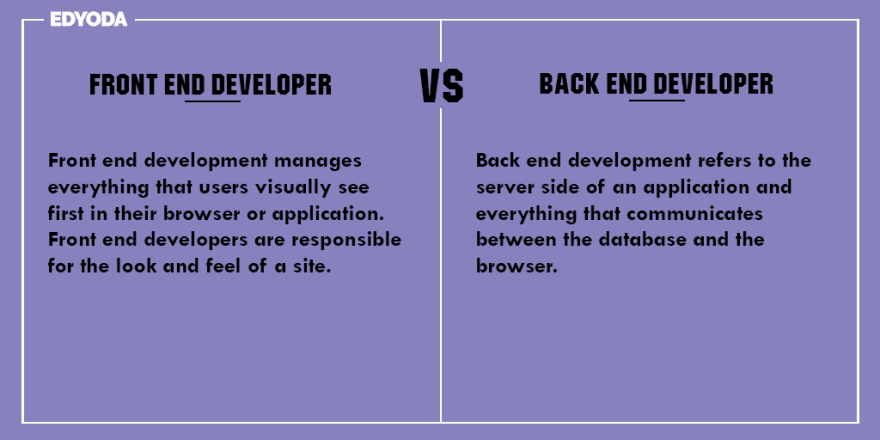The Hosting Insight
Your go-to source for the latest in web hosting news and tips.
Code Behind the Curtain: The Unsung Heroes of Back-End Development
Unearth the secrets of back-end development and meet the unsung heroes shaping the digital world. Discover their impact today!
Understanding APIs: The Backbone of Modern Back-End Development
APIs, or Application Programming Interfaces, serve as a vital communication bridge between different software applications. In the realm of modern back-end development, they allow various systems to work in harmony, facilitating data exchange and operational efficiency. By providing a standardized way for developers to request and manipulate data, APIs enable the integration of diverse functionalities, which is essential in today's rapidly evolving technological landscape. This is particularly evident in microservices architecture, where individual services interact through APIs, streamlining development processes and improving scalability.
Moreover, understanding how to effectively utilize and implement APIs is crucial for developers aiming to build robust and scalable applications. APIs can be categorized into different types such as REST, SOAP, and GraphQL, each with its own unique strengths. For instance, REST APIs are widely favored for their simplicity and broad adoption, making them a popular choice for web services. By leveraging these interfaces, developers can enhance application performance, maintain code modularity, and create seamless user experiences across platforms. As such, APIs are not just an option but rather the backbone of modern back-end development.

The Importance of Database Management: Why Back-End Developers Are Key
Database management is a critical aspect of software development that significantly influences the performance and reliability of applications. As the backbone of any data-driven application, effective database management ensures that data is organized, accessible, and secure. Without proper management, organizations risk running into issues such as data loss, corruption, and inefficiencies that can hinder growth. This is where back-end developers play an essential role. They possess the skills needed to design, implement, and maintain databases, ensuring that the application's back-end operates smoothly and integrates seamlessly with the front-end components.
Moreover, back-end developers are responsible for optimizing the database to enhance performance and scalability. They utilize various techniques such as indexing, query optimization, and database normalization to ensure that applications can handle increased loads without sacrificing speed or user experience. Additionally, back-end developers implement robust security measures to protect sensitive data from breaches and unauthorized access. In today’s data-driven landscape, the importance of database management cannot be overstated, making back-end developers an invaluable asset for any organization aiming to leverage its data effectively.
What Does a Back-End Developer Really Do? Unveiling the Mystery
A back-end developer plays a critical role in web development by managing the server-side logic and integration of the application. They are responsible for creating and maintaining the database, ensuring that data can be retrieved, modified, and securely stored. This involves using programming languages such as Python, Java, or Ruby to develop the server, and frameworks like Node.js and Django to streamline the development process. Additionally, back-end developers work closely with front-end developers to establish a seamless user experience through APIs and ensure the website functions smoothly.
In their daily tasks, back-end developers may perform a variety of functions including:
- Building and maintaining RESTful services
- Implementing server-side logic
- Managing database connections and data integrity
- Ensuring application security and data protection
Understanding the intricacies of server architecture and database management allows back-end developers to optimize website performance and scalability, which are crucial for handling high traffic and user engagement. Their expertise remains vital as they continue to innovate with new technologies, contributing to the ever-evolving landscape of web development.